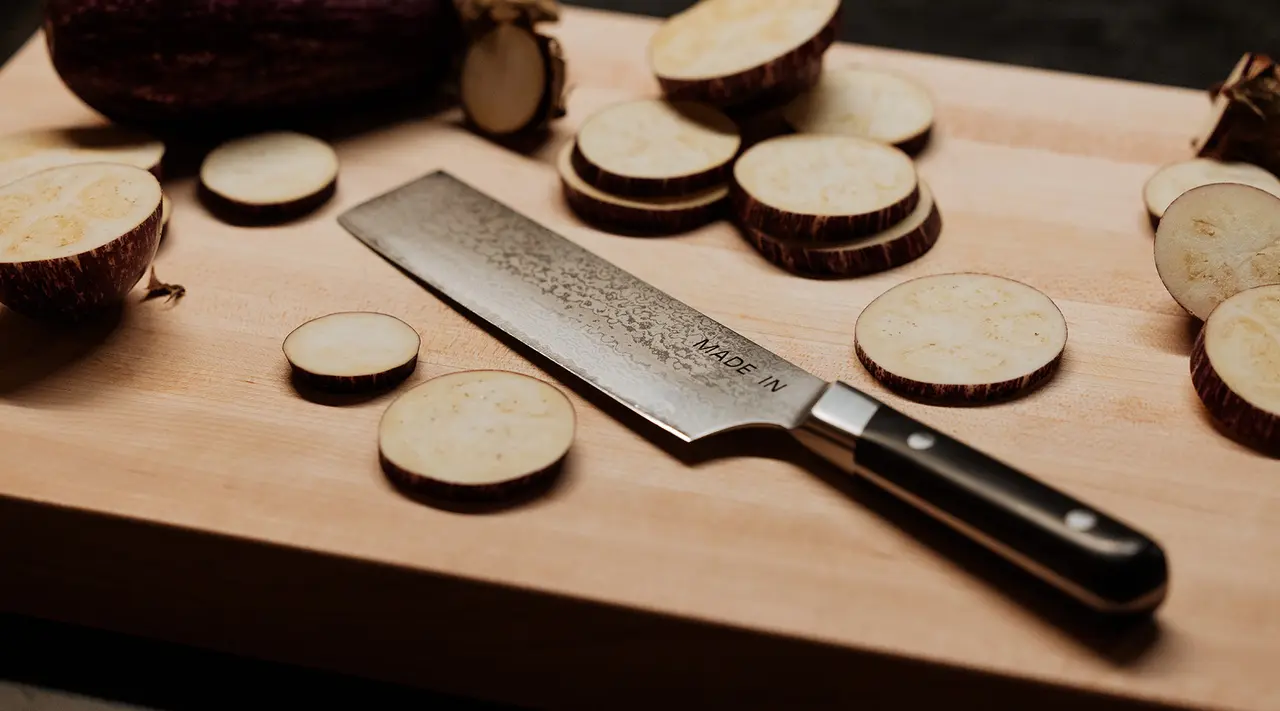Known for their sharpness, durability, and nimble, lightweight design, Japanese knives are ideal for both home cooks and professional chefs looking for a workhorse blade. Two of the most popular styles are the western-style gyuto and the slightly more traditional santoku, both of which can stand in as an all-purpose, everyday knife.
Beyond the santoku and the gyuto, however, you’ll find a rich and diverse world of Japanese knife styles. For centuries, Japanese knife-makers have produced hyper-specialized knives for almost every ingredient imaginable—even specific varieties of fish. Here, we’ll go over some of the most common styles, and hopefully inspire you to pick one up for yourself.
Understanding Japanese Knives

It’s no coincidence that Japan is known for both high-quality kitchen knives and deadly swords: when blacksmiths started producing culinary knives, they applied many of the same skills and techniques used to forge weapons like the katana and the tachi.
While Japanese knives vary significantly in terms of design, they share a few common characteristics. In general, Japanese knives:
- Are made of extra-hard, high-carbon steel with an iron core (often Damascus steel)
- Feature a thinner, lighter blade than many western knives, making them ideal for precise slicing, trimming, and mincing
- Usually (but not always) have a single beveled edge, rather than double, resulting in a sharper edge. This makes them a bit harder to care for, and left-handed cooks may struggle to use them properly.
Generally, Japanese knives are smaller and lighter than Western knives, and made from steel with a higher percentage of carbon. This makes for a harder, more brittle blade that nonetheless holds an edge longer than many Western-style blades.
Another difference between Japanese and Western knives is that Japanese knives tend to be highly specialized—rather than just one type of fish knife, for example, you can find knives designed for butchering whole fish, and even knives intended for cutting specific varieties like tuna and blowfish.
Types of Japanese Knives

While there’s a huge number of Japanese knife types, here are a few of the most common shapes.
Deba
If you’re looking for a butcher knife for fish or chicken, the deba is your best bet. With a chunky shape and thin, single-beveled edge, this knife can do it all, from cutting through fish bones to trimming delicate filets. Note that the same qualities that make it so successful at those tasks preclude it from being an “all purpose” blade, as the single bevel edge and thick spine will not yield straight cuts on ingredients like vegetables.
Gyuto (Chef's Knife)
The gyuto is the Japanese answer to the Western chef knife, and many cooks actually prefer these slimmer, lighter knives for daily use. The name translates roughly to “beef sword” or “cow blade,” and was invented in the 19th century, when beef was introduced to the Japanese diet.
The gyuto works for anything you’d use a western chef knife for, though keep in mind that because Japanese steel chips more easily, they’re not the best for hacking through bones or cutting hard vegetables like kabocha squash. Our Gyuto is forged from Damascus steel with a VG-10 core, ensuring it stays sharp for longer.
Nakiri
With a boxy shape and squared-off tip, the nakiri looks a bit like a mini cleaver, designed for straight up-and-down chopping versus a more delicate rocking motion. This—plus an extremely thin, flat blade—makes this knife especially well-suited to chopping, slicing, and peeling vegetables. While it’s not an all-purpose knife like the santoku or gyuto, it also works well for slicing boneless fish and meat.
Santoku
Out of all these knives, the santoku is one you’ve most likely seen—or at least heard of—before. Resembling a chef’s knife but with a completely flat edge and rounded spine, the santoku is another all-purpose knife. It does a particularly good job of chopping or slicing vegetables, but we like it just as much for breaking down poultry and butchering fish.
Usuba
The usuba is another knife intended specifically for vegetable prep. With a shape similar to that of the nakiri, the usuba is perfect for making thin, precise cuts. Unlike the nakiri, however, the usuba features a single-beveled edge, which can make it a bit trickier to get used to (as well as more difficult to sharpen).
Yanagi
Another knife designed for slicing fish for sushi and sashimi, the yanagi is long and slender with a pointed edge, a bit like a western-style carving knife. This shape—coupled with a single-bevel blade—allows for long, clean cuts with minimal drag, making it ideal for delicate ingredients like raw fish.
How to Choose the Right Japanese Knife

As cool as some of these traditional knives may be, they’re also hyper-specific—and, unless you regularly practice some of those specific use cases, we wouldn’t recommend starting with something like a yanagi or a deba right off the bat. If you only have the budget and storage space for one knife, you’re best off with something all-purpose like a gyuto or a santoku.
Ready to Shop?
You don’t have to run a Japanese restaurant—or even cook a lot of Japanese food—to use one of these knives. From the versatile gyuto to the fish-friendly yanagi or deba, each of these knives is universal enough to fit into any knife collection. And with our new collection of Damascus steel knives forged in Seki, Japan, you can chop, slice, and dice with confidence.


































